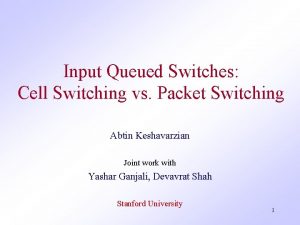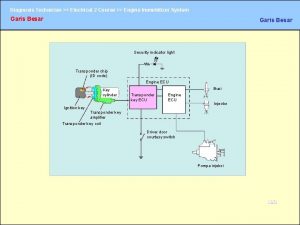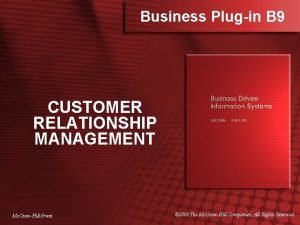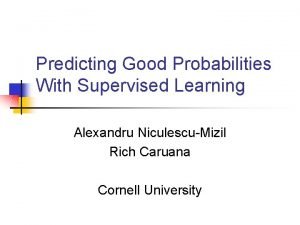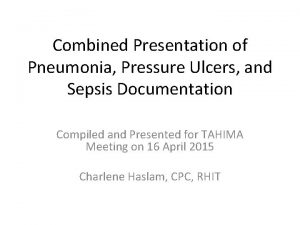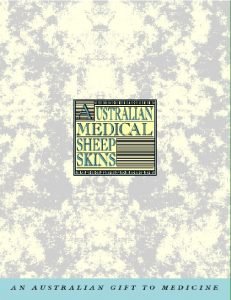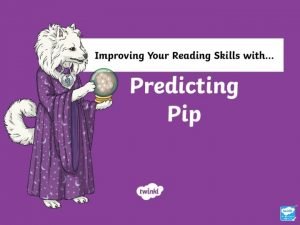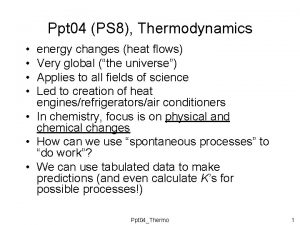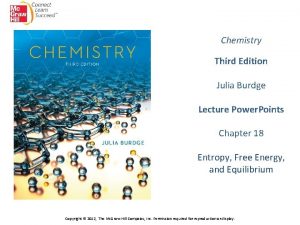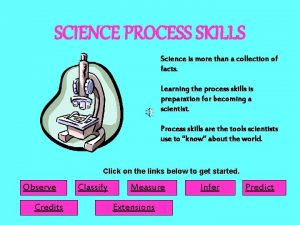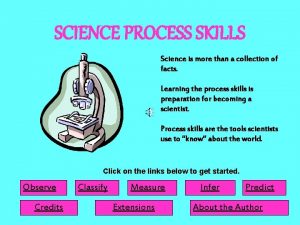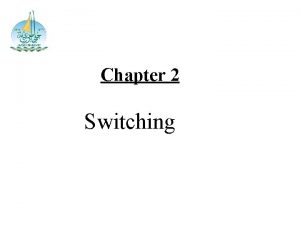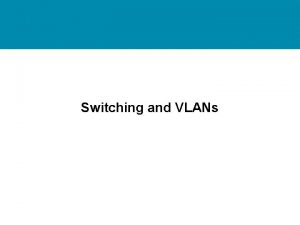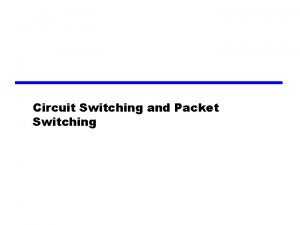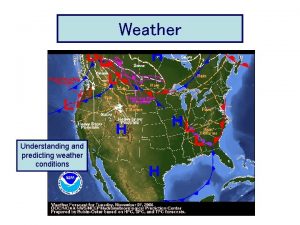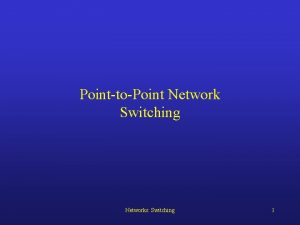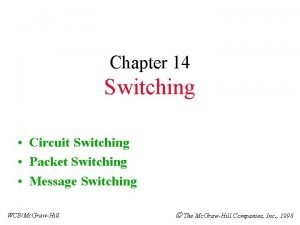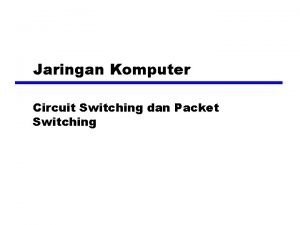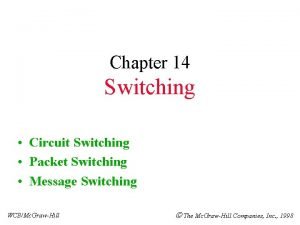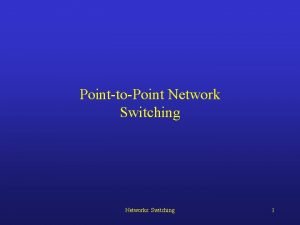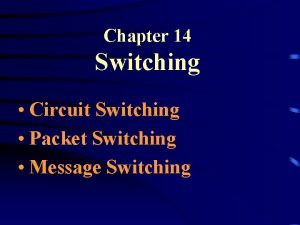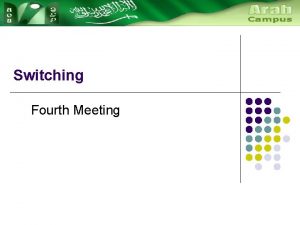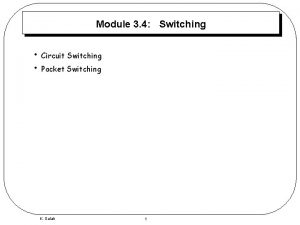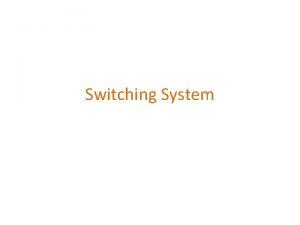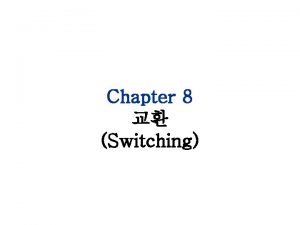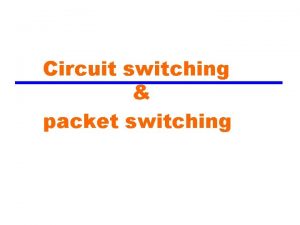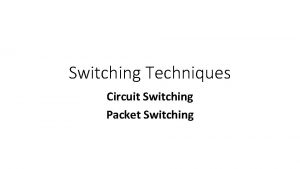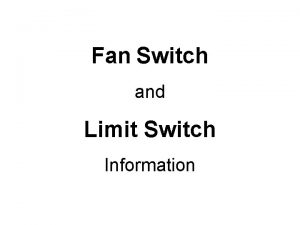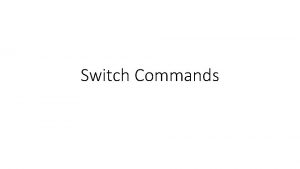Why Searchers Switch Understanding and Predicting Engine Switching



![“DSAT” – Query: [harry potter] “DSAT” – Query: [harry potter]](https://slidetodoc.com/presentation_image_h2/90fac856162f8b3efebe94a6cc69dfa9/image-4.jpg)
![“Coverage”– Query: [bellevue wa apartments] “Coverage”– Query: [bellevue wa apartments]](https://slidetodoc.com/presentation_image_h2/90fac856162f8b3efebe94a6cc69dfa9/image-5.jpg)
![Other (“Unintentional”) – Query: [facebook] Other (“Unintentional”) – Query: [facebook]](https://slidetodoc.com/presentation_image_h2/90fac856162f8b3efebe94a6cc69dfa9/image-6.jpg)



![Reasons for Engine Switching [White and Dumais, CIKM’ 09] • A retrospective questionnaire of Reasons for Engine Switching [White and Dumais, CIKM’ 09] • A retrospective questionnaire of](https://slidetodoc.com/presentation_image_h2/90fac856162f8b3efebe94a6cc69dfa9/image-10.jpg)











![Query Change and Goal Change Query change Goal change [% judged (non-ignored) queries] Ignored Query Change and Goal Change Query change Goal change [% judged (non-ignored) queries] Ignored](https://slidetodoc.com/presentation_image_h2/90fac856162f8b3efebe94a6cc69dfa9/image-22.jpg)











- Slides: 33

Why Searchers Switch: Understanding and Predicting Engine Switching Rationales Qi Guo (Emory University) Ryen W. White, Yunqiao Zhang, Blake Anderson, Susan T. Dumais (Microsoft Corporation)

What is Engine Switching? • Voluntary transition from one search engine to another search engine – e. g. , Query Google then query Yahoo! or Bing • We focus on within-session switching • Other variants include: – Between-session switching – Long-term switching

Why Searchers Switch? • Dissatisfaction (DSAT) with search results • Topic coverage (i. e. , desire to find additional information) • Other (e. g. , user preferences, unintentional)
![DSAT Query harry potter “DSAT” – Query: [harry potter]](https://slidetodoc.com/presentation_image_h2/90fac856162f8b3efebe94a6cc69dfa9/image-4.jpg)
“DSAT” – Query: [harry potter]
![Coverage Query bellevue wa apartments “Coverage”– Query: [bellevue wa apartments]](https://slidetodoc.com/presentation_image_h2/90fac856162f8b3efebe94a6cc69dfa9/image-5.jpg)
“Coverage”– Query: [bellevue wa apartments]
![Other Unintentional Query facebook Other (“Unintentional”) – Query: [facebook]](https://slidetodoc.com/presentation_image_h2/90fac856162f8b3efebe94a6cc69dfa9/image-6.jpg)
Other (“Unintentional”) – Query: [facebook]

Motivations • Improve search quality by identifying DSAT switches – Pre-switch engine: improve on to retain users – Post-switch engine: perform well on to gain users • Refine competitive metrics – Compare performance against competitors – e. g. , DSAT/Coverage switch rates • Provide additional help in real-time if DSAT switch is predicted

Definitions • A search session is a sequence of activities (e. g. , query, URL, etc. ) that begins with a query and ends with 30 minutes inactivity • A search engine switching event is a pair of consecutive queries that are issued on different search engines in a session

Research Questions 1. Why do searchers switch search engines? 2. Which behavioral signals are associated with different causes? 3. How accurately can we predict the causes of engine switching?
![Reasons for Engine Switching White and Dumais CIKM 09 A retrospective questionnaire of Reasons for Engine Switching [White and Dumais, CIKM’ 09] • A retrospective questionnaire of](https://slidetodoc.com/presentation_image_h2/90fac856162f8b3efebe94a6cc69dfa9/image-10.jpg)
Reasons for Engine Switching [White and Dumais, CIKM’ 09] • A retrospective questionnaire of 488 users – – 57% DSAT 26% Coverage 12% Preferences 5% Other • Drawbacks – Do not always align with actual behavior – Missing corresponding behavioral data

Data Collection: Obtaining Real Rationales with Corresponding Behavioral Data • Lab user study – Insufficient data (switching is rare) – Unnatural switching behavior • Human annotation of sample switching sessions – Sufficient data (search log is huge) – Switching rationales are subjective • In-situ assessments – Real switch rationales – Natural switching behavior – Sufficient data (if widely deployed)

In-situ Assessments • Implementation – IE Browser add-on: Switch. Watch – Pop-up dialog when switch – Record URLs, timestamps, tab focus/blur, etc. – Help maintain privacy • Exclude https URLs • Anonymization • Deployment – Participants: 216 Microsoft employees (2200 invited, 10% response rate) – 4 weeks (50 USD lottery gift card / week)

Pop-up Dialog • Information about Switch – Pre-/Post-switch queries – Pre-/Post-switch engines – Pre-/Post-switch timestamps • Search Goal changes – Exactly the same – Related – Not the same • Switch Reasons – – – Dissatisfaction Verification/Coverage Unintentional Better for this type Preference Other • Ignore Button

Pop-up Dialog • Information about Switch – Pre-/Post-switch queries – Pre-/Post-switch engines – Pre-/Post-switch timestamps • Search Goal changes – Exactly the same – Related – Not the same • Switch Reasons – – – Dissatisfaction Verification/Coverage Unintentional Better for this type Preference Other • Ignore Button

Pop-up Dialog • Information about Switch – Pre-/Post-switch queries – Pre-/Post-switch engines – Pre-/Post-switch timestamps • Search Goal changes – Exactly the same – Related – Not the same • Switch Reasons – – – Dissatisfaction Verification/Coverage Unintentional Better for this type Preference Other • Ignore Button

Pop-up Dialog • Information about Switch – Pre-/Post-switch queries – Pre-/Post-switch engines – Pre-/Post-switch timestamps • Search Goal changes – Exactly the same – Related – Not the same • Switch Reasons – – – Dissatisfaction Verification/Coverage Unintentional Better for this type Preference Other • Ignore Button

Pop-up Dialog • Information about Switch – Pre-/Post-switch queries – Pre-/Post-switch engines – Pre-/Post-switch timestamps • Search Goal changes – Exactly the same – Related – Not the same • Switch Reasons – – – Dissatisfaction Verification/Coverage Unintentional Better for this type Preference Other • Ignore Button

Overview of Behavioral Data • 20, 554 queries • 1, 004 switches (excluded 25 test-suggestive queries, e. g. , ‘test’, ‘hello world’) • 562 (56%) received in-situ assessments • 4. 2% of the queries followed by a switch • 107 (49. 5%) of the 216 users switched at least once

RQ 1. Why do searchers switch search engines?

RQ 1. Why do searchers switch search engines? • Why do searchers change search queries? • What is the breakdown of different causes? • How does the change of search queries influence the breakdown?

Query Change During Switching • Observation: high % query changes during switching • Definitions & Breakdown – 32 % Same Query (SQ): Identical queries – 18% Related Queries (RQ): share at least one query term that is not a stop word, but are not SQ – 50% Different Queries (DQ): no common (non-stopword) terms • Why do searchers change query? – What does query change suggest about goal change? – Is it associated with switching causes?
![Query Change and Goal Change Query change Goal change judged nonignored queries Ignored Query Change and Goal Change Query change Goal change [% judged (non-ignored) queries] Ignored](https://slidetodoc.com/presentation_image_h2/90fac856162f8b3efebe94a6cc69dfa9/image-22.jpg)
Query Change and Goal Change Query change Goal change [% judged (non-ignored) queries] Ignored Same Goal Related Goals Different Goals All 65% 9% 25% 45% Same Query 98% 1% 1% 27% Related Queries 77% 20% 3% 39% Different Queries 23% 12% 65% 60% • Influence on Goal Change – SQ almost always suggests Same Goal (SG) – RQ most of the time suggests Same Goal (SG) – DQ most of the time suggests Different Goals (DG) • Influence on Providing Feedback – The more related the queries/goals, the more likely the users are to provide feedback in the dialog – Annoying to interrupt if the search goal is changed

Query Change & Switch Causes 100% 90% 80% 70% 60% 50% 40% 30% 20% 10% 0% Dissatisfaction Coverage Preferences Other %SQ %RQ %DQ %All %Retrospective • %All is very different from %Retrospective – Lower Dissatisfaction, Coverage; higher Preferences, Other • %DQ is the most different – contains mostly Preferences and Other (e. g. , unintentional) • %SQ is the most similar – when asked to recount their last switching event, people

Focus on SQ switches • Greatest fraction of intentional causes (e. g. , dissatisfaction/coverage) • DSAT switches most valuable to search provider – Pre-switch engine: improve on to retain users – Post-switch engine: perform well on to gain users • Direct comparisons between original and destination engines

RQ 2. Which behavioral signals are associated with different causes?

User Behaviors Associated with Switches • Query – Length in words/characters – Time difference between pre- and post-switch queries • Pre-/Post-switch Behavior – Num. of queries – Num. and rate of unique queries – Num. and rate of reformulations – Num. and rate of clicks – Num. and rate of SAT-clicks (dwell >= 30 seconds) – Num. and rate of Bounce Clicks (dwell < 15 seconds) – Num. of pages on clicked trails – Num. of clicks on results with query terms in title

User Behaviors Associated with Switches • Query – Length in words/characters – Time difference between pre- and post-switch queries • Pre-/Post-switch Behavior – Num. of queries – Num. and rate of unique queries – Num. and rate of reformulations – Num. and rate of clicks – Num. and rate of SAT-clicks (dwell >= 30 seconds) – Num. and rate of Bounce Clicks (dwell < 15 seconds) – Num. of pages on clicked trails – Num. of clicks on results with query terms in title NOTE: Colors = Significant differences in DSAT vs. Other and Coverage vs. Other

RQ 3. How accurately can we predict the causes of engine switching?

Predicting the Switching Causes • Binary predictions: one-vs-all classifier for each rationale • Classifier: logistic regression • Metric: F 0. 5 – twice weight on Precision than Recall – Offline: search logs are huge – Online: only intervene users when confidence is high • Methods compared – Baseline (Prior) – Baseline (Rule) • DSAT: no pre-switch click and one or more clicks after the switch • Coverage: both pre- and post-switch clicks exist • Other: neither of the above rules are triggered – Classifier with All / Query / Pre-switch / Post-switch features • Data: 354 in-situ SQ switches • Experiments: 10 -fold Cross Validation

Prediction Results Baseline (Prior): p <. 05, p <. 01; Baseline (Rule): p <. 05, p <. 01 Method DSAT Coverage Other Base (Prior) 72. 40 27. 12 17. 40 Base (Rule) 48. 84 24. 19 20. 20 All Features 85. 69 47. 84 29. 01 • All features – Significantly outperforms both baselines in predicting DSAT and Coverage – Marginally outperforms baselines in predicting Other • Predicting Other is more Challenging – Requires information about user profiles (e. g. , preferred search engine, browser setting)

Features Importance (DSAT) Base (Prior) Base (Rule) All Query Pre-switch Post-switch 72. 40 48. 84 85. 69 74. 28 81. 12 78. 99 • All the groups outperform baselines (p <. 05) • Pre-switch features > post-switch features – Pre-switch interaction reveals more about switching rational – More variance in what users do following a switch • Most important features – – – Num. Pre-switch clicks(+) Pre-switch unique query rate (+) Num. Post-switch clicks on URLs that contain query terms (+) Pre-switch SAT click rate (−) Post-switch query reformulation rate (−)

Summary • Demonstrates the feasibility of studying engine switching rationales using in-situ assessments and client-side instrumentation • Provides insights about how search goal changes and user behavior are associated with switch rationales • Develops models to accurately predict switching rationales using behavioral features which enables various important applications

Thank you! • Thanks to SIGIR for travel grant support!
 Circuit switching packet switching message switching
Circuit switching packet switching message switching Datagram network
Datagram network Difference between circuit message and packet switching
Difference between circuit message and packet switching Cell switching vs packet switching
Cell switching vs packet switching A switched wan is normally implemented as a network
A switched wan is normally implemented as a network Cell switching vs packet switching
Cell switching vs packet switching Hey bye bye
Hey bye bye A switch combines crossbar switches in several stages
A switch combines crossbar switches in several stages Go proximity limit switch
Go proximity limit switch Lampu indikator sistem engine immobilizer
Lampu indikator sistem engine immobilizer External and internal combustion engine
External and internal combustion engine Bahasa inggris disusun
Bahasa inggris disusun Apa itu previewing and predicting
Apa itu previewing and predicting The evolution of crm is reporting analyzing and predicting
The evolution of crm is reporting analyzing and predicting Predicting and naming ionic compounds
Predicting and naming ionic compounds Dont ask why why why
Dont ask why why why Predicting products of chemical reactions
Predicting products of chemical reactions Predicting products of chemical reactions
Predicting products of chemical reactions Predicting products of chemical reactions
Predicting products of chemical reactions Predicting good probabilities with supervised learning
Predicting good probabilities with supervised learning Section 3 predicting the products of chemical reactions
Section 3 predicting the products of chemical reactions Pressure ulcer query template
Pressure ulcer query template Braden scale for predicting pressure sore risk
Braden scale for predicting pressure sore risk Prediction pip
Prediction pip Predicting pip
Predicting pip Axe molecular geometry
Axe molecular geometry Predicting single replacement reactions
Predicting single replacement reactions Thermodynamics ppt
Thermodynamics ppt Predicting spontaneity
Predicting spontaneity Vertical arrow technique
Vertical arrow technique Predicting spontaneity
Predicting spontaneity Science process skills predicting
Science process skills predicting Science process skills predicting
Science process skills predicting Predicting products
Predicting products



